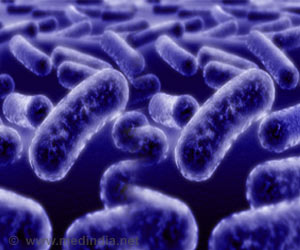
Gut Bacteria in Health and Disease
How the bacterium can move out of the intestine and to other organs has remained largely unexplored. However, researchers have observed that two different populations of the same species of bacterium exist, Dr. Morales said. One population develops traits that allow it to pass through the intestinal barrier acquiring an advantageous resistance to antimicrobials, while the other stays put.‘Enterococcus faecalis, a typical gut bacterium that can spread through the body and cause a serious infection resists natural immune defenses and antibiotics by enhancing its protective outer layer, known as the cell envelope.’
Tweet it Now
In a series of previous laboratory studies of the bacterium, the researchers found that motile E. faecalis produces molecules formed by sugar chains called polysaccharides that allow the bacterium to aggregate or clump together. “When these bacteria aggregate, they seem to develop an ability to move,” Dr. Morales said. In the current study, the investigators, including lead author Dr. Yusibeska Ramos, a research associate in obstetrics and gynecology, found that the motile form of E. faecalis has a cell envelope containing increased amounts of glycolipids, which are fat molecules linked with a carbohydrate. Enhanced production of cell envelope glycolipids appears to help the bacterium to resist extracellular stressors. These stressors include the antimicrobial agent daptomycin, a common treatment for E. faecalis infection, and β-defensins, small molecules intestinal epithelial cells produce to deter infection.
The researchers also found that genetic mutations that inhibit glycolipid production made E. faecalis more sensitive to these stressors and reduced the ability of the bacterium to penetrate cell surfaces and move through intestinal epithelial cells.
The next step for the researchers is to evaluate additional in vivo models to confirm whether the molecular pathways uncovered in the current study are needed for the bacterium to exit the intestine.
Source-Eurekalert











